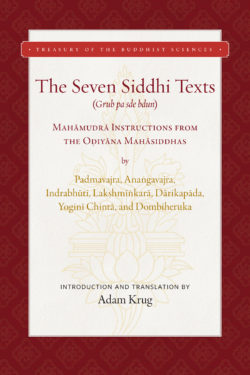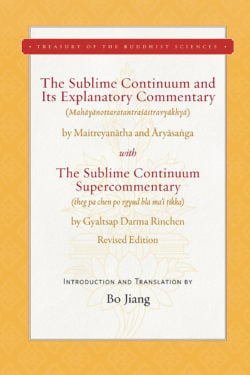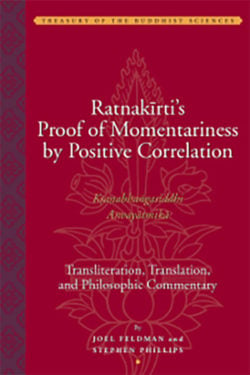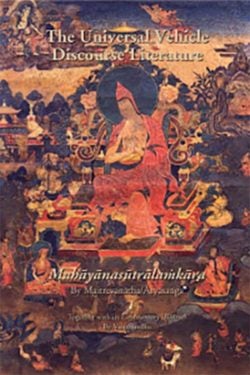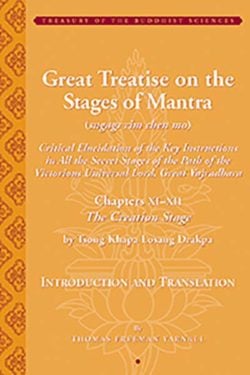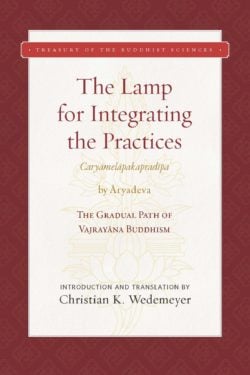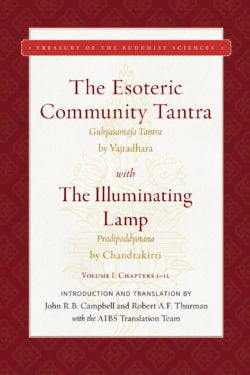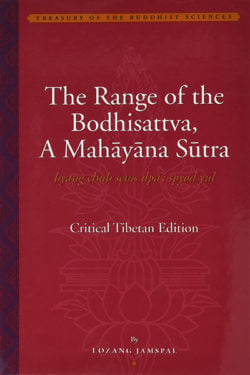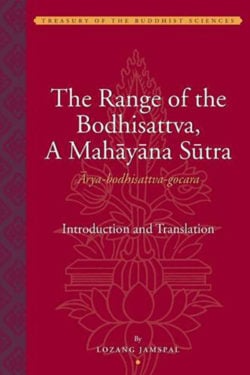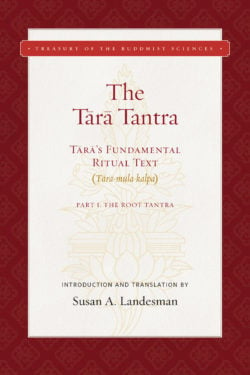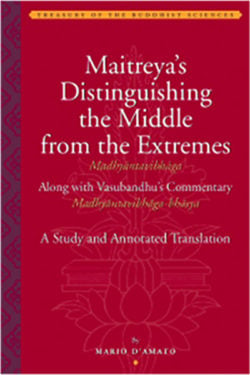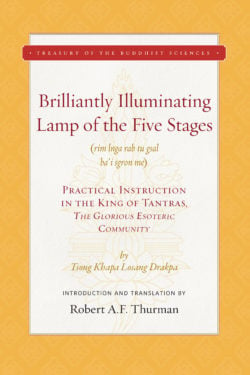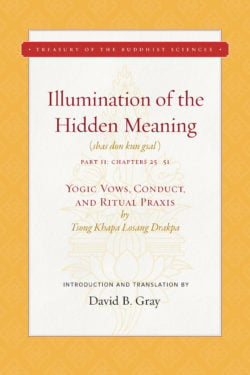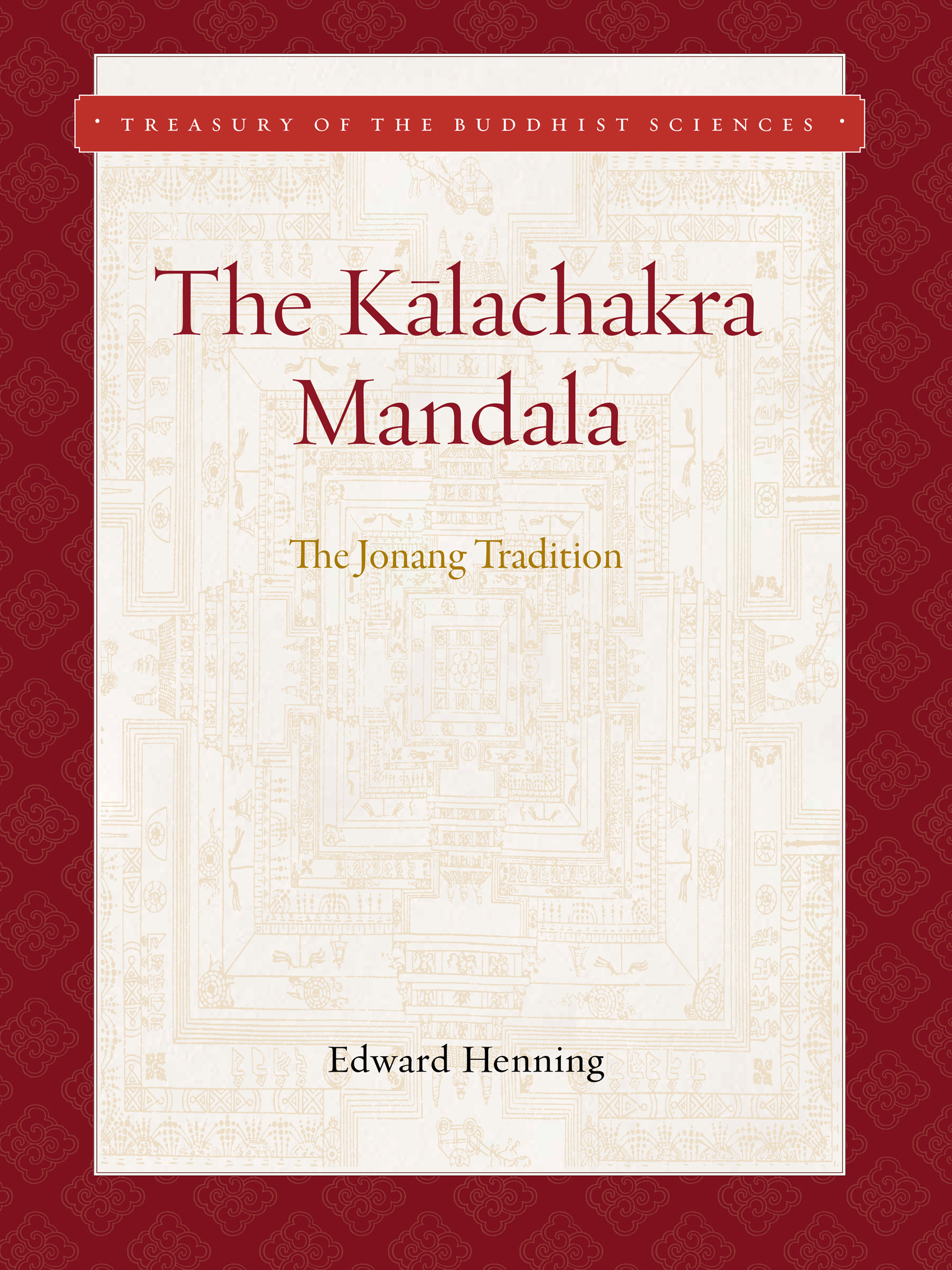
THE KāLACHAKRA MANDALA
A detailed, beautifully illustrated presentation of the construction and symbolism of the famed Kālachakra mandala, the crown jewel of the Indo-Tibetan tantric traditions.
This volume contains an extensive analysis of the construction and symbolism of the mandala of the Kālachakra tantric system, the most intricate and explicit of the Indian Buddhist unexcelled yoga tantras, the most advanced teachings within the Indo-Tibetan tradition. Indo-Tibetan tantric traditions, particularly the unexcelled category, depend on imagery and visualization for the processes of purifying cyclic existence, and Kālachakra is the most detailed. The late scholar-practitioner Edward Henning, one of the earliest Western specialists on this material, offers this labor of love as a testament to the genius of the Tibetan tradition in preserving and transmitting these teachings over a thousand years. Well known internationally now due to the Dalai Lama’s many public initiations, the Kālachakra mandala serves as a primary focal point for meditators both new and seasoned. Henning draws primarily from the Jonang tradition of Kālachakra practice, particularly the modern master Banda Gelek, to elucidate and clarify inconsistencies across traditions and literature, including the authoritative Indian commentary Stainless Light (Vimalaprabhā), regarding the construction and visualization of the three-tiered mandala with its hundreds of deities. In addition to providing detailed information on the images to be visualized, Henning provides in the final chapter a clear and extensive explanation of the symbolism of the habitat and inhabitants that are to be animated during the meditation session. An excellent companion to the translations of the Kālachakra Tantra and Stainless Light chapters co-published by the American Institute of Buddhist Studies and Wisdom Publications, this beautifully illustrated volume is a must-have for scholars and practitioners alike.
- Hardcover
- 272 pages, 9 x 12 inches
- $108
- ISBN 9781949163261
- eBook
- 272 pages
- $73.99
- ISBN 9781949163339
“A scholar of Tibetan Buddhism and computer journalist with expertise in information technologies, the late Edward Henning gifted us his last labor of love, a book that brings the specialized knowledge of the Kālachakra’s spiritual mysteries to life. With great care, this book describes the symbolism, architectural design, and the multi-dimensional experience of the mandala. Such exquisite detail will be appreciated by scholars for its historical importance, artists for its representation of the mandala in both 2D drawings and 3D constructs, and perhaps most essentially, by Kālachakra practitioners for its instruction on how the vivid resplendence of the mandala is performatively visualized in their mind’s eye.”—Michael R. Sheehy, director of scholarship at the Contemplative Sciences Center, research assistant professor in Tibetan Buddhist studies in the Department of Religious Studies, and affiliated faculty at the Tibet Center at the University of Virginia
“Henning’s detailed presentation and illustrations of the structure and symbolism of the kālacakramaṇdala as expounded by the Jonang Kālacakra master Banda Gelek is the first such presentation. It brings to light the Jonang tradition’s unique interpretation of the kālacakramaṇdala that combines its innovative elements with those presented in the original Indian sources. It indirectly points to the malleability of the application of the kālacakramaṇdala to different contemplative traditions. This work will be of interest not only to scholars and practitioners of the Kālacakratantra but also to art historians interested in the comparative study of the kālacakramaṇdala paintings.”—Vesna Wallace, professor of South and Central Asian religions at the University of California at Santa Barbara
“Perhaps no other tantra has more deeply influenced Tibetan Buddhism and its reception in the West than Kālacakra, whose maṇḍala has been so often produced during numerous empowerments, museum exhibitions, and activities devoted to protecting and strengthening global peace. And no modern scholar mastered the Kālacakra material with its complex technical details more thoroughly than Edward Henning, who shared his broad and profound knowledge in the present publication. It profited not only from extensive textual studies across different Tibetan traditions but also from his long years as a translator for Kagyu and Jonang masters. Kālachakra Mandala: The Jonang Tradition covers a wide range of topics, from the symbolism of the mandala and its role in empowerment to more technical issues such as measurements and terms unique to this tantric system. It is a must-read for everybody interested in tantric Buddhism.”—Klaus-Dieter Mathes, head of the Department of South Asian, Tibetan, and Buddhist Studies at the University of Vienna
Discover More
The Seven Siddhi Texts
Available early! Use code SST20 to receive 20% until December 23.
The first English-language translation (with rich historical introduction and extensive annotation) of a key group of Indian Buddhist tantric texts that have had profound influence on the Tibetan Buddhist tradition.
The Seven Siddhi Texts is a key collection of Indian Buddhist tantric exegetical treatises that have shaped the interpretation of unexcelled yoga tantra and Mahāmudrā (Great Seal) practice in Tibet from the eighth century ce to the present. The scholar-yogi authors of these seven texts—drawing upon their scriptural knowledge and personal insight—clarify the intended meanings underlying cryptic, seemingly antinomian passages in root tantras such as the Esoteric Community Tantra (Guhyasamāja-tantra) pertaining to sex, violence, and magical powers, which have proved controversial for many traditional and modern scholars. These seven treatises come from the famed mahāsiddha (great adept) tradition, which often defied the rigid social, religious, and gender norms of premodern India in quest of nondual wisdom. The translator’s introduction places the collection in its Indian sociohistorical context, traces its reception in Tibetan Mahāmudrā practice lineages, and addresses modern misinterpretations. As a window into the earliest Indian Buddhist tantric communities, the Seven Siddhi Texts is a treasure for both practitioners and scholars of these increasingly popular subjects.
This volume is part of the Treasury of the Buddhist Sciences series, copublished by the American Institute of Buddhist Studies (AIBS) and Wisdom Publications in association with the Columbia University Center for Buddhist Studies and Tibet House US. You can learn more about the series here.
The Reason Sixty
The Reason Sixty: Second Edition presents two key Indian Buddhist philosophical masterpieces that integrate the Buddhist ethos of wisdom and compassion, with their profound relevance to contemporary thought clarified by a renowned scholar of contemplative science.
This volume contains English translations of two critical treatises of the Middle Way (Madhyamaka) Buddhist philosophical school: the Reason Sixty, by the most important of Indian thinkers Nāgārjuna (2nd century CE), and the commentary by his most influential successor, Chandrakīrti (7th century CE). These two treatises emphasize the non-foundationalist reasoning for which Madhyamaka thought is famed, here within the context of that quintessential Buddhist topic, universal compassion, thereby illuminating the nondual nature of these two fundamental components of Indian Buddhist thought. The full import of Nāgārjuna’s verses are brought to life by Chandrakīrti, whose influence in Tibetan Buddhist educational institutions remains profound to the present. Translator Joseph Loizzo, a Harvard-trained psychiatrist and Columbia-trained Buddhologist, elucidates the relevance of these two treatises to the linguistic turn in contemporary philosophy and emphasizes their practical, therapeutic possibilities. Comparing in particular the deep resonances between Chandrakīrti’s commentary and Wittgenstein’s later work, Loizzo presents a masterful analysis in cross-cultural thought that highlights the transformative potential of philosophy.
This volume is part of the Treasury of the Buddhist Sciences series, copublished by the American Institute of Buddhist Studies (AIBS) and Wisdom Publications in association with the Columbia University Center for Buddhist Studies and Tibet House US. You can learn more about the series here.
The Sublime Continuum and Its Explanatory Commentary
The original Sublime Continuum Explanatory Commentary was written by Noble Asanga to explain the verses received from the bodhisattva Maitreya in the late fourth century CE in northern India. Here it is introduced and presented in an original translation from Sanskrit and Tibetan, with the translation of an extensive Tibetan Supercommentary by Gyaltsap Darma Rinchen (1364–1432), whose work closely followed the view of his teacher, Tsong Khapa (1357–1419).
Contemporary scholars have widely misunderstood the Buddhist Centrist (Madhyamaka) teaching of emptiness, or selflessness, as either a form of nihilism or a radical skepticism. Yet Buddhist philosophers from Nagarjuna on have shown that the negation of intrinsic reality, when accurately understood, affirms the supreme value of relative realities. Gyaltsap Darma Rinchen, in his Supercommentary, elucidates a highly positive theory of buddha nature, showing how the wisdom of emptiness empowers the compassionate life of the enlightened, as it is touched by its oneness with the truth body of all buddhas. With his clear study of Gyaltsap’s insight and his original English translation, Bo Jiang completes his historic project of studying and presenting these works from Sanskrit and Tibetan in both Chinese and, now, English translations, in linked publications.
Ratnakīrti’s Proof of Momentariness by Positive Correlation (Kṣaṇabhaṇgasiddhi Anvayātmikā)
The Kṣaṇabhaṇgasiddhi is a masterpiece of skillful reasoning by the eleventh-century Indian Buddhist philosopher Ratnakīrti. This renowned scholar taught at the great Buddhist University of Vikramaśīla and was a master of almost every classical philosophical school that preceded him.
The present work is informed by centuries of debate between Buddhist advocates of momentariness and archrival Nyāya philosophers who believed that both selves and things endure.
This book is the first published translation of Ratnakīrti’s proof based on positive correlations, and includes a commentary explaining each step of his reasoning.
The Universal Vehicle Discourse Literature (Mahāyānasūtrālaṁkāra)
The Universal Vehicle Discourse Literature (Mahāyānasūtrālaṃkāra) was transmitted from the bodhisattva Maitreyanātha to Āryā Āsaṅga, the fourth-century Indian Buddhist scholar-adept. The most foundational of the set of the famous Five Teachings of Maitreya, the Discourse Literature is considered the wellspring of what the Tibetans call the “magnificent deeds trend of the path,” the compassion side, which balances the “profound view trend of the path,” the wisdom side. The Discourse Literature is also considered to be metaphysically aligned with and foundational for the Idealist (Vijñānavādin) school of Mahāyāna thought. Translated from Sanskrit, Tibetan, and Chinese by Lobsang Jamspal, Robert Thurman, and the AIBS team, the present work contains a fully annotated, critical English rendition of the Discourse Literature along with its commentary (bhāṣya) by Āsaṅga’s brother, Vasubandhu. It also includes an introduction covering essential historical and philosophical topics, a bibliography, and a detailed index. This long-awaited work is the founding cornerstone of the AIBS Treasury of the Buddhist Sciences series.
In Vimalakīrti’s House
Over the course of nearly half a century, Robert A. F. Thurman has left an indelible mark on numerous fields of study, including Buddhist literature, Tantric Buddhism, Tibetan studies, and the comparative sciences of mind. To celebrate his seventieth birthday, Thurman’s students and colleagues have come together to pay tribute to these contributions and to Thurman’s ongoing leadership in these fields by assembling a collection of essays of their own that extend and supplement his groundbreaking research.
In Vimalakīrti’s House is the result of this collaboration and represents a broad spectrum of cutting edge studies in areas central to Thurman’s own scholarly project. The resulting volume is itself a kind of “treasury of the Buddhist sciences,” insofar as its authors explore wide-ranging problems in art, literature, epistemology, history, ritual, buddhology, and lexicography.
Great Treatise on the Stages of Mantra (Sngags rim chen mo)
Tsong Khapa’s Great Treatise on the Stages of Mantra (Sngags rim chen mo)—considered by the present Dalai Lama to be one of Tsong Khapa’s two most important books (along with his Lam rim chen mo)—is his masterful synthesis of the principles and practices of all four classes of Tantra, which formed the basis of his innovation in creating the esoteric “Tantric College” institution and curriculum in the early fifteenth century. With detailed reference to hundreds of works from the Tibetan Kangyur and Tengyur, the chapters presented and studied in this volume concern his treatment of the creation stage (bskyed rim) meditations of Unexcelled Yoga Tantra. This includes a detailed analysis emphasizing how and why such creation stage practices—utilizing deity yoga to transform death, the between, and life into the three bodies of buddhahood are indispensible to creating a foundation for successfully entering the culminal yogic practices of the perfection stage. (A subsequent volume will present the perfection stage chapters of this essential masterwork.)
An important work for both scholars and practitioners, this annotated translation is supplemented with extensive support materials.
The Lamp for Integrating the Practices (Caryāmelāpakapradīpa)
The Lamp for Integrating the Practices (Caryāmelāpakapradīpa) by Āryadeva, is a systematic and comprehensive exposition of the most advanced yogas of the Esoteric Community Tantra (Guhyasamāja-tantra) as espoused by the Noble (Nāgārjuna) tradition, an influential school of interpretation within Indian Buddhist mysticism. Equal in authority to Nāgārjuna’s famous Five Stages (Pañcakrama), Āryadeva’s work is perhaps the earliest prose example of the “stages of the mantra path” genre in Sanskrit. Its systematic path exerted immense influence on later Indian and Tibetan traditions, and it is widely cited by masters from all four major lineages of Tibetan Buddhism.
This volume presents the Lamp in a thoroughly annotated English translation. It includes an introductory study discussing the history of the Guhyasamāja and its exegetical traditions, surveying the scriptural and commentarial sources of the Nāgārjuna tradition, and analyzing in detail the contents of the Lamp. The book also features a detailed, trilingual glossary.
Simultaneously presented online for scholars are a version of its Sanskrit original, critically edited from recently identified manuscripts, and a critical edition of the eleventh-century Tibetan translation by Rinchen Zangpo, including notes on readings found in “lost,” alternative translations.
The Esoteric Community Tantra with The Illuminating Lamp
This volume is a translation of the first twelve chapters of The Glorious Esoteric Community Great King of Tantras (Śrī Guhyasamāja Mahā-tantra-rāja), along with the commentary called The Illuminating Lamp (Pradīpoddyotana-nāma-ṭīkā), a commentary in Sanskrit on this tantra by the seventh-century Buddhist intellectual and tantric scholar-adept Chandrakīrti. Regarded by Indo-Tibetan tradition as the esoteric scripture wherein the Buddha revealed in greatest detail the actual psycho-physical process of his enlightenment, The Esoteric Community Tantra is a preeminent text of the class of scriptures known to Indian Buddhist scholar-adepts as great yoga tantra, and later to their Tibetan successors as unexcelled yoga tantra. The Illuminating Lamp presents a system of interpretive guidelines according to which the cryptic meanings of all tantras might be extracted in order to engage the ritual and yogic practices taught therein. Applying its interpretive strategies to the text of The Esoteric Community Tantra, The Illuminating Lamp articulates a synthetic, “vajra vehicle” (vajrayāna) discourse that locates tantric practices and ideals squarely within the cosmological and institutional frameworks of exoteric Mahāyāna Buddhism.
The Range of the Bodhisattva, A Mahāyāna Sutra (byang chub sems dpa’i spyod yul)
This is the companion volume to The Range of the Bodhisattva: Introduction and Translation, a critical Tibetan edition of the Mahāyāna Sūtra, the Bodhisattva-gocara, which presents one of the only Buddhist teachings extant on what might be called a “Buddhist theory of war.” The main body of the text takes the form of a dialogue between King Caṇḍapradyota and the Nirgrantha sage, Satyaka, who is later revealed by Shākyamuni Buddha to be a bodhisattva of high attainment. The author’s critical edition synthesizes the readings of five different recensions of the text to produce an edition of the sūtra that runs parallel to the published English translation.
Kālacakra and the Tibetan Calendar
Kālacakra and the Tibetan Calendar describes the contents of current Tibetan almanacs, from the most basic mathematics to the symbolic and historical information they contain. Essential for understanding the Kālacakra Tantra’s first chapter, it traces and describes the origin of the calendrical systems in the Kālacakra Tantra, and it translates and elucidates the key relevant sections from the famous commentary to this Tantra, the Vimalaprabhā.
The main calendars in use in Tibet today have remained unchanged since the fifteenth century, when lamas in several different traditions tried to make sense of the calculation systems they had inherited from India, and to adjust them to remove increasingly obvious errors in their results. This book analyzes the main systems that survive today, assessing their accuracy and comparing them with the methods described in the original Tantra.
The Range of the Bodhisattva, a Mahāyana Sūtra (Ārya-bodhisattva-gocara)
This is a study and the first complete English translation of the Mahāyāna Sūtra, the Bodhi-sattva-gocara, which presents one of the only Buddhist teachings extant on what might be called a “Buddhist theory of war.” The main body of the text takes the form of a dialogue between King Caṇḍapradyota and the Nirgrantha sage, Satyaka, who is later revealed by Śākyamuni Buddha to be a bodhisattva of high attainment.
The author’s introductory essay traces the ways in which the later Indian and Tibetan commentarial traditions have drawn on this sūtra in order to expound upon key themes in Buddhist ethics, law, and state policy, to highlight their positions in opposition to their non-Buddhist contemporaries. From the author’s analysis, it is clear that this sūtra has been seminal in the ethical reflections of generations of Indian and Tibetan Buddhists, though it appears that it was not well known in East Asia.
A companion volume of a Tibetan critical edition is also available.
The Tārā Tantra
This volume contains an English translation of the “root text” of the Tārā-mūla-kalpa, a scripture-ritual compendium that captures an important Buddhist tantric tradition in mid-formation. In this regard it is utterly unique and unlike any other text in the Buddhist canon. Its contents document the emergence of the quintessential female Buddha Tārā in seventh-century India. As her popularity grew, her cult spread throughout Southeast Asia, as well as Tibet, where she became revered as the “Mother” of the Tibetan people. Tārā is worshiped for a variety of reasons, from health and long life, to wealth, protection from enemies, and ultimately, the mind of enlightenment. Her presence pervades the evolution of Buddhism in Tibet, including within royal circles, as well as mentor and guide to many important Buddhist scholars, practitioners, and lineage holders.
Maitreya’s Distinguishing the Middle from the Extremes (Madhyāntavibhāga)
Maitreyanātha’s Distinguishing the Middle from the Extremes (Madhyāntavibhāga) was transmitted to us by the noble Asaṅga, great saint and champion scholar of fourth century CE Indic Buddhism—along with Vasubandhu’s commentary on the text. It is one of the five seminal texts of what the Tibetans call the “magnificent deeds tradition” of universal vehicle Buddhism, according to its spiritual focus and ethical impact. Its emphasis on the nondual, primarily mental nature of reality most powerfully supports the great messianic vow of the bodhisattva, the entry into the universal vehicle lifestyle. In his study introducing the translation, Dr. D’Amato analyzes and elucidates the teachings of this text and its associated school with great learning and insight.
A Catalogue of the Comparative Kangyur
This is the first volume of a two-volume set providing detailed cataloging information for the recently published Comparative (dpe bsdur ma) recension of the Tibetan Tripiṭaka.
The catalogue includes cross-references to seven other Kangyur recensions used in the compilation of the Comparative Kangyur, including the previously uncataloged “Litang” (li thang) Kangyur. In addition, errors found in the “tables of contents” (dkar chag) and “cross-reference tables” (re’u mig) to the published edition have been corrected and verified against the published volumes and original blockprints. Indices to Tibetan and Sanskrit titles, translators, and revisers have been added, along with concordance tables aligning catalogue numbers between the various recensions.
The Vajra Rosary Tantra
The Vajra Rosary Tantra (Śrī Vajramālā Vyākhyā Tantra) is one of the most significant and detailed tantras attributed to the Buddha, in his emanation as Vajradhara. It instructs a practitioner how to overcome the 108 energies and their related instinctual conceptions that circulate in the subtle body and mind and drive continued rebirth in cyclic existence, in order to attain the freedom of enlightenment. One of the explanatory tantras of the Buddhist Esoteric Community (Guhyasamāja) Tantra, its unexcelled yoga tantric system is among the most advanced systems described in Tibetan Buddhist literature. It mainly focuses on the final stage of Buddhist tantric practice, the perfection stage by means of which a person is said actually to become a buddha.
There is no more authoritative endorsement than that of the great Tibetan renaissance scholar, Lama Tsong Khapa, who strongly recommended the Vajra Rosary Tantra as follows: “Nāgārjuna, in condensing the perfection stage into the five stages, follows this tantra; he also follows it regarding the creation stage three samadhis, four yogas, thirty-two deities, and so forth. . . . It explains the many stages of creation and dissolution of the body in terms of the channel structure, wind energy movement, and enlightenment-spirit substance as a factor in the decisive ascertainment of the internal and external life-energy controls for bringing forth the four voids and the magic body, depending on . . . the hidden discipline of desire and of the vajra recitation . . . and the limitless ways for the dawning of realization. . . . It seems that such excellent elucidation is rarely seen.”
Brilliantly Illuminating Lamp of the Five Stages
The Brilliantly Illuminating Lamp of the Five Stages (rim lnga rab tu gsal ba’i sgron me) is Tsong Khapa’s master commentary on the perfection-stage practices of the Esoteric Community (Guhyasamāja), the tantra he considered fundamental for the “father tantra” class of unexcelled yoga tantras, as the primary source for the development of the “magic body” technique for attaining buddhahood. Based on Nāgārjuna’s Five Stages (Pañcakrama) and Āryadeva’s Lamp That Integrates the Practices (Caryāmelāpakapradīpa), as well as a vast range of other works by Indian and Tibetan scholars and adepts, it also reveals openly the experiences of the author, himself a master practitioner.
This blockbuster work of Jey Tsong Khapa opens a window on one of the most amazing, incredibly advanced attainments ever claimed to be possible for a human being within a single lifetime. The author explains in detail the relation between exoteric and esoteric teachings and practices on the path to complete enlightenment, with its seemingly superhuman awarenesses and abilities. He clarifies the interconnections between the various categories of secret tantras, inspires by showing how far-reaching are the systematic methods of positive personal transformation developed and taught in India and Tibet, and openly shows what this tradition considered possible, giving us a whole new vision of life’s meaning and a strengthened confidence in our horizon of opportunities. This bold and well-reasoned work presents a fascinating new way to understand our own body and mind, to manage more confidently our own life and death trajectories, and to rejoice in the sense of the extreme value of our human lifetime as a platform for realizing our personal evolutionary potential.
Illumination of the Hidden Meaning, Vol. 2
This is the second of two volumes presenting Dr. David Gray’s study and translation of the Illumination of the Hidden Meaning (sbas don kun gsal) by the Tibetan Buddhist scholar-yogi Tsong Khapa Losang Drakpa (1357–1419). The Illumination contains Tsong Khapa’s magnificent commentary on the Indian Buddhist Cakrasamvara Tantra, one of the earliest and most influential of the yoginī tantras, a genre of tantric Buddhist scripture that emphasizes female deities, particularly the often fiercely depicted yoginīs and ḍākinīs. Together with the first volume, this contains the first English translation of this important work that marks a milestone in the history of the Tibetan assimilation of the Indian Buddhist tantras.
This second volume, which includes Tsong Khapa’s detailed introduction to chapters 25–51 of the 51-chapter Cakrasamvara root tantra, covers the vows, observances, and conduct of the initiated yogī, particularly in relation to the yoginīs, whose favor he must cultivate. It describes in great detail the rites of the tradition, including homa fire sacrifice and the uses of the mantras of the maṇḍala’s main deities. The author provides a trilingual English–Tibetan–Sanskrit glossary.
Together with the author’s related publications in this series—including translations of the root Cakrasamvara Tantra (2007, 2010, 2019); the critically edited Sanskrit and Tibetan texts of the root tantra (2012); and the first volume of this master Tibetan commentary (chapters 1–24), subtitled Maṇḍala, Mantra, and the Cult of the Yoginīs (2017)—the reader will have the first full study of this important tantra available in English.


